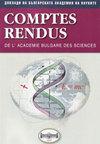基质改性复合材料ⅱ类修复体10个月体外边缘适应性和微渗透性研究
IF 0.3
4区 综合性期刊
Q4 MULTIDISCIPLINARY SCIENCES
Comptes Rendus De L Academie Bulgare Des Sciences
Pub Date : 2023-10-31
DOI:10.7546/crabs.2023.10.06
引用次数: 0
摘要
目前体外研究的目的是比较II类修复体的边缘适应性和微渗透性,这些修复体位于牙釉质-牙髓连接处下方1mm处,使用两种传统的二甲基丙烯酸酯复合材料(Filtek P60和Filtek Ultimate)和两种改良聚合物基质的创新复合材料(Venus Diamond和Kalore)修复,老化时间超过10个月。通过扫描电镜分析和评价了边缘对近缘腔的适应性。采用染色法评估微渗透性,并用立体显微镜进行分析。两项研究使用了相同的样本。根据数据进行相关分析,建立边际适应性与微渗透率之间的关系。我们发现,材料对牙龈、前庭和舌近端边缘边缘的边缘适应值在统计上有显著差异($$p<0.005$$)。F. p60与V. Diamond和F. Ultimate差异显著。卡洛雷排列在中间,与上述两组没有很大的不同。从微渗透性来看,效果较好的F. Ultimate与F. p60和Kalore ($$p<0.005$$)有显著差异。龈壁边缘适应优分与微渗透性有显著相关($$p=0.008$$)。由此可见,创新的高分子量复合材料并不能显著提高牙龈壁完全位于牙本质内的II类牙腔的边际适应性和微渗透性。本文章由计算机程序翻译,如有差异,请以英文原文为准。
Ten-month In Vitro Study of Marginal Adaptation and Micropermeability in Class II Restorations Made with Matrix-modified Composites
The aim of the present in vitro study was to compare the marginal adaptation and micropermeability of class II restorations with a gingival wall, located 1 mm below the enamel-cementum junction, restored with two conventional dimethacrylate composites (Filtek P60 and Filtek Ultimate), and two innovative composites with a modified polymer matrix (Venus Diamond and Kalore) over ten months of ageing. The marginal adaptation to the proximal margins of the cavity was analyzed and evaluated by the SEM. The dye method was used to assess the micropermeability, and the analysis was performed using a stereomicroscope. The same samples were used for both studies. A correlation analysis was done based on the data to establish the relationships between marginal adaptation and micropermeability. A statistically significant difference in the estimates for marginal adaptation of materials to the gingival, vestibular, and lingual proximal edges for values of excellent marginal adaptation ($$p<0.005$$) was found. F.P60 differed significantly from V. Diamond and F. Ultimate. Kalore is arranged in the middle and does not differ considerably from the above two groups. According to micro permeability, a significant difference was found between F. Ultimate with better results and F.P60 and Kalore ($$p<0.005$$). There was a significant correlation ($$p=0.008$$) between the excellent scores for marginal adaptation to the edge of the gingival wall and micropermeability. It can be concluded that innovative high-molecular-weight composites do not significantly improve marginal adaptation and micropermeability in class II cavities, with a gingival wall located entirely in dentin.
求助全文
通过发布文献求助,成功后即可免费获取论文全文。
去求助
来源期刊
CiteScore
0.60
自引率
33.30%
发文量
181
审稿时长
3-6 weeks
期刊介绍:
Founded in 1948 by academician Georgy Nadjakov, "Comptes rendus de l’Académie bulgare des Sciences" is also known as "Доклади на БАН","Доклады Болгарской академии наук" and "Proceeding of the Bulgarian Academy of Sciences".
If applicable, the name of the journal should be abbreviated as follows: C. R. Acad. Bulg. Sci. (according to ISO)

 求助内容:
求助内容: 应助结果提醒方式:
应助结果提醒方式:


